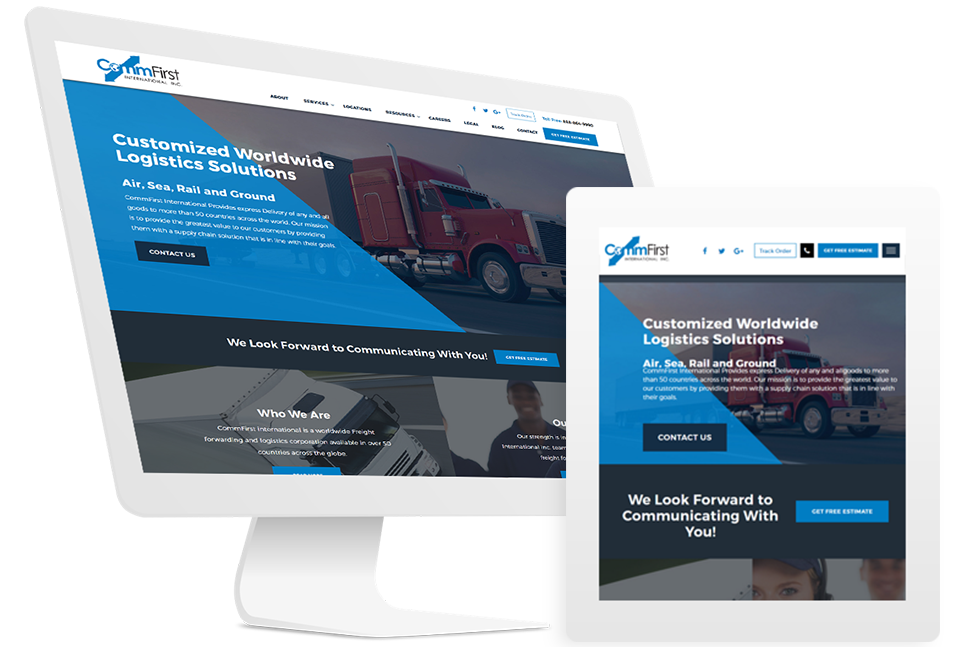Exploring the Link In Between SEO and Effective Website Design
Exploring the Link In Between SEO and Effective Website Design
Blog Article

Crafting a User-Friendly Experience: Essential Components of Reliable Site Layout
In the realm of site layout, the significance of crafting a straightforward experience can not be overemphasized. Important aspects such as a clear navigation structure, responsive design principles, and fast loading times work as the structure for involving users successfully. An intuitive user interface coupled with obtainable content standards ensures that all individuals, regardless of capacity, can browse with simplicity. Despite these fundamental principles, lots of web sites still falter in delivering this seamless experience. Understanding the underlying elements that contribute to efficient style can shed light on just how to improve user satisfaction and involvement.
Clear Navigation Framework
A clear navigating structure is essential to efficient web site style, as it directly affects individual experience and engagement. Users should have the ability to locate details easily, as intuitive navigating lowers disappointment and motivates exploration. An efficient design permits visitors to recognize the relationship in between various web pages and material, leading to longer website sees and increased communication.
To achieve clarity, designers should use familiar patterns, such as top or side navigating bars, dropdown food selections, and breadcrumb routes. These elements not only enhance usability but also provide a feeling of alignment within the website. Preserving a regular navigating framework throughout all pages is important; this familiarity assists individuals expect where to find wanted details.
It is additionally necessary to restrict the variety of food selection things to avoid overwhelming individuals. Prioritizing the most vital sections and utilizing clear labeling will guide visitors properly. Additionally, integrating search performance can even more aid individuals in finding details web content promptly (website design). In recap, a clear navigation structure is not simply a design choice; it is a calculated component that dramatically impacts the overall success of a site by promoting a delightful and effective user experience.
Responsive Style Concepts
Effective site navigating establishes the stage for a smooth individual experience, which comes to be much more crucial in the context of responsive layout concepts. Receptive design makes certain that web sites adapt fluidly to numerous screen dimensions and orientations, improving accessibility across tools. This adaptability is accomplished with adaptable grid formats, scalable images, and media queries that enable CSS to change designs based upon the tool's characteristics.
Secret concepts of receptive layout include fluid designs that make use of percents rather than repaired units, making sure that components resize proportionately. In addition, using breakpoints in CSS makes it possible for the design to transition efficiently in between various tool dimensions, optimizing the layout for each display kind. The usage of receptive pictures is also necessary; photos must immediately change to fit the screen without losing quality or causing format changes.
Additionally, touch-friendly interfaces are essential for mobile users, with sufficiently sized buttons and intuitive motions boosting customer interaction. By integrating these principles, designers can create web sites that not just look visually pleasing however likewise supply engaging and useful experiences throughout all gadgets. Eventually, efficient receptive layout fosters individual contentment, decreases bounce prices, and urges much longer interaction with the web content.
Rapid Loading Times
While individuals progressively anticipate web sites to load swiftly, fast filling times are not just an issue of convenience; they are essential for preserving visitors and enhancing total individual experience. Study suggests that customers usually desert sites that take longer than 3 seconds to tons. This desertion can lead to boosted bounce prices and decreased conversions, eventually damaging a brand name's credibility and profits.
Fast packing times boost see this page user interaction and satisfaction, as visitors are most likely to discover a site that responds swiftly to their communications. Additionally, internet search engine like Google prioritize speed in their ranking algorithms, implying that a slow web site may struggle to achieve exposure in search engine result.

Intuitive Interface
Rapid loading times lay the foundation for an interesting online experience, however they are just part of the equation. An instinctive interface (UI) is crucial to ensure site visitors can navigate an internet site easily. A properly designed UI go to these guys enables users to attain their goals with marginal cognitive tons, fostering a smooth communication with the website.
Secret components of an instinctive UI consist of constant format, clear navigation, and recognizable icons. Consistency in layout aspects-- such as color pattern, typography, and button designs-- aids users understand how to engage with the website. Clear navigating frameworks, including logical food selections and breadcrumb tracks, make it possible for users to discover information swiftly, decreasing disappointment and boosting retention.
In addition, feedback systems, such as hover impacts and packing indications, notify customers regarding their actions and the site's action. This openness grows trust fund and encourages continued engagement. Prioritizing mobile responsiveness ensures that individuals take pleasure in a natural experience across devices, catering to the varied methods target markets gain access to material.
Easily Accessible Content Standards

First, use straightforward and clear language, staying clear of lingo that may puzzle readers. Emphasize proper heading frameworks, which not just aid in navigating however likewise assist screen readers in interpreting material pecking orders effectively. Additionally, supply alternative message for images to convey their meaning to customers who count on assistive technologies.
Contrast is one more crucial component; make sure that message sticks out against the history to boost readability. Guarantee that video and audio web content consists look at these guys of captions and records, making multimedia available to those with hearing disabilities.
Finally, include keyboard navigability right into your style, allowing users who can not use a mouse to accessibility all website functions (website design). By adhering to these accessible content standards, web developers can produce comprehensive experiences that accommodate the demands of all individuals, ultimately improving user engagement and satisfaction
Final Thought
Finally, the assimilation of important aspects such as a clear navigation framework, responsive layout concepts, quickly packing times, an intuitive user interface, and easily accessible web content standards is crucial for creating a straightforward web site experience. These parts collectively enhance usability and engagement, making certain that individuals can easily engage and navigate with the website. Prioritizing these layout components not just boosts total satisfaction however likewise fosters inclusivity, fitting diverse customer needs and choices in the digital landscape.
A clear navigation structure is fundamental to reliable web site style, as it directly influences individual experience and interaction. In summary, a clear navigation framework is not just a layout choice; it is a calculated component that substantially influences the general success of a web site by cultivating a satisfying and effective user experience.
In addition, touch-friendly interfaces are critical for mobile users, with effectively sized switches and instinctive motions improving user interaction.While individuals increasingly expect websites to fill quickly, quickly filling times are not simply a matter of comfort; they are crucial for retaining visitors and boosting overall user experience. website design.In conclusion, the combination of important elements such as a clear navigation structure, responsive style principles, quick filling times, an user-friendly user interface, and obtainable content guidelines is vital for creating an user-friendly website experience
Report this page